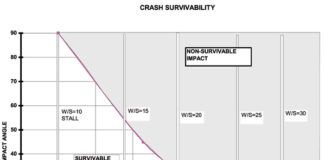Where’d Everybody Go?
What happened to “Ask the DAR”? He wasn’t in my last issue, and I miss him.
—Rick Schuch
Not to fear—Mel happened to take November off, and many of our other regular contributors took the month of December off to allow room for the massive Buyer’s Guide. You’ll be seeing them in this and future issues once again.
By the way, if you have questions for Mel, be sure to send them via email to [email protected] with “Ask the DAR” in the subject line.—Ed.
DIY Solar Chargers
Jim Weir’s solar charger article [“So-lar, It’s Been Good to Know You,” October 2017] is excellent on the principles, but a little short on the practice. The regulator circuit resembles a spaghetti explosion. There should be an inset describing how to remove/replace the two surface-mount resistors on the TI charger, and a parts-source list should be included.
—Ted Jula
Jim Weir responds: Thanks for the feedback. It probably would have been to my advantage (and yours) not to even mention the TI ready-made charger. I was trying to show a contrast from a ready-made device (the TI) and my homebrew dead-bug breadboard to its immediate left on page 76. Everything else in the article was based on the breadboard, not the TI.
I also thought that if you did want to use the TI charger and had the experience to remove surface-mount components that you probably were into the profession enough to head to the TI website to get the information on the little sample board.
I used to give a parts list with every diagram. What we found was that by the time I wrote the article, it got into print, and finally made it to the reader, the source may have dried up, the components may have changed in price, the suffix/package could have been obsoleted, and a host of other problems. Where it is important to have an exact part (D101, for example), I specify a part number. Where it is immaterial because of power levels or other parameters (L101, for example), any old part with that value will work. That has seemed to work well for our readers.
One More Change
The description of making “just one more change” [“While I’m in Here,” October 2017] was a great read. It seems a close cousin of mission creep, which occurs when a great design gets selected for multiple missions.
Too many changes can also be a nemesis in the build process as one good idea after another in the non-structural arena gets consideration. It seems logical to freeze the design at some early point and just finish the project.
—Harold Bickford
You’re right Harold, requirements changes are the bugaboo of aircraft design and completion, whether you are flying the Space Shuttle or a simple homebuilt. It’s OK to change your mind—but you have to understand the consequences and costs of doing so. Otherwise, the finish line just keeps moving farther off in the distance.—Ed.
Letters to the Editor
We always enjoy hearing from our readers. Please send your comments, good or bad, to [email protected].










